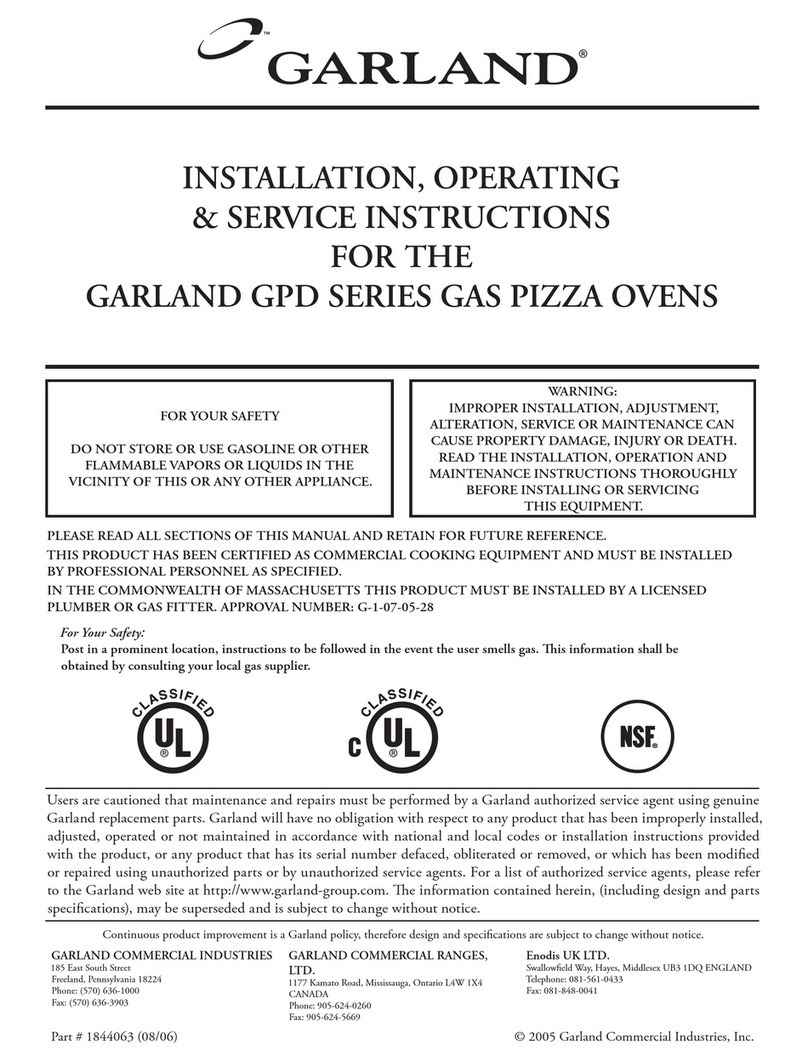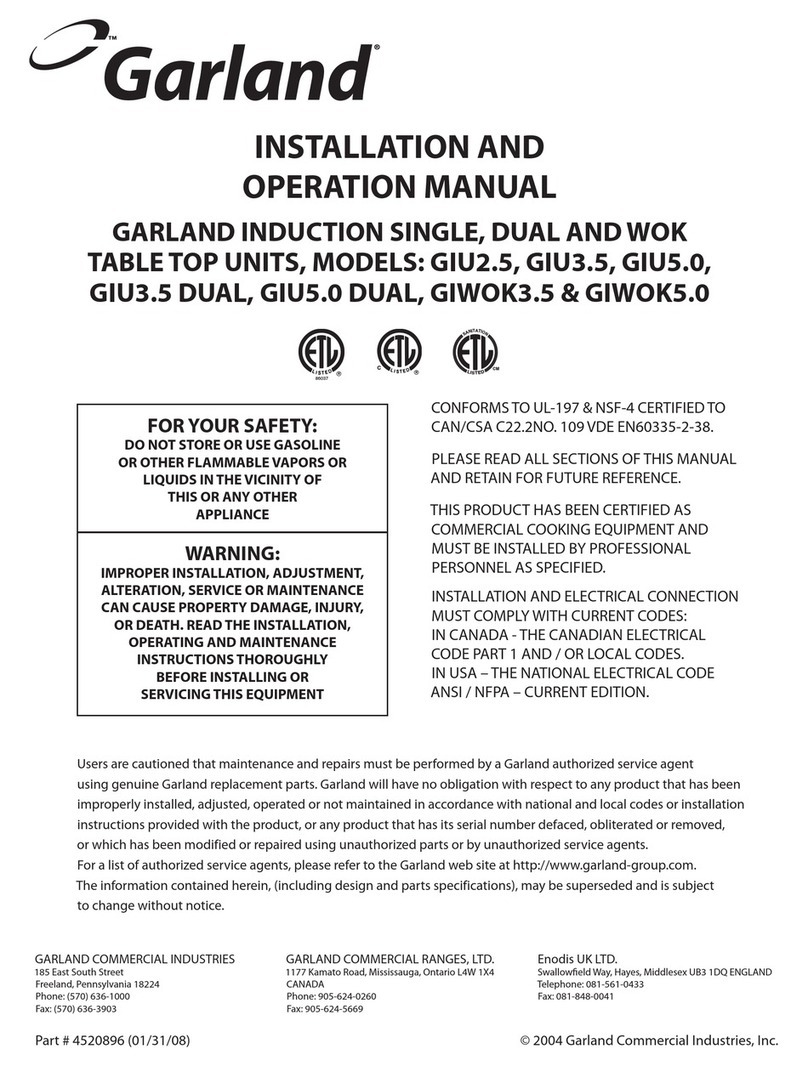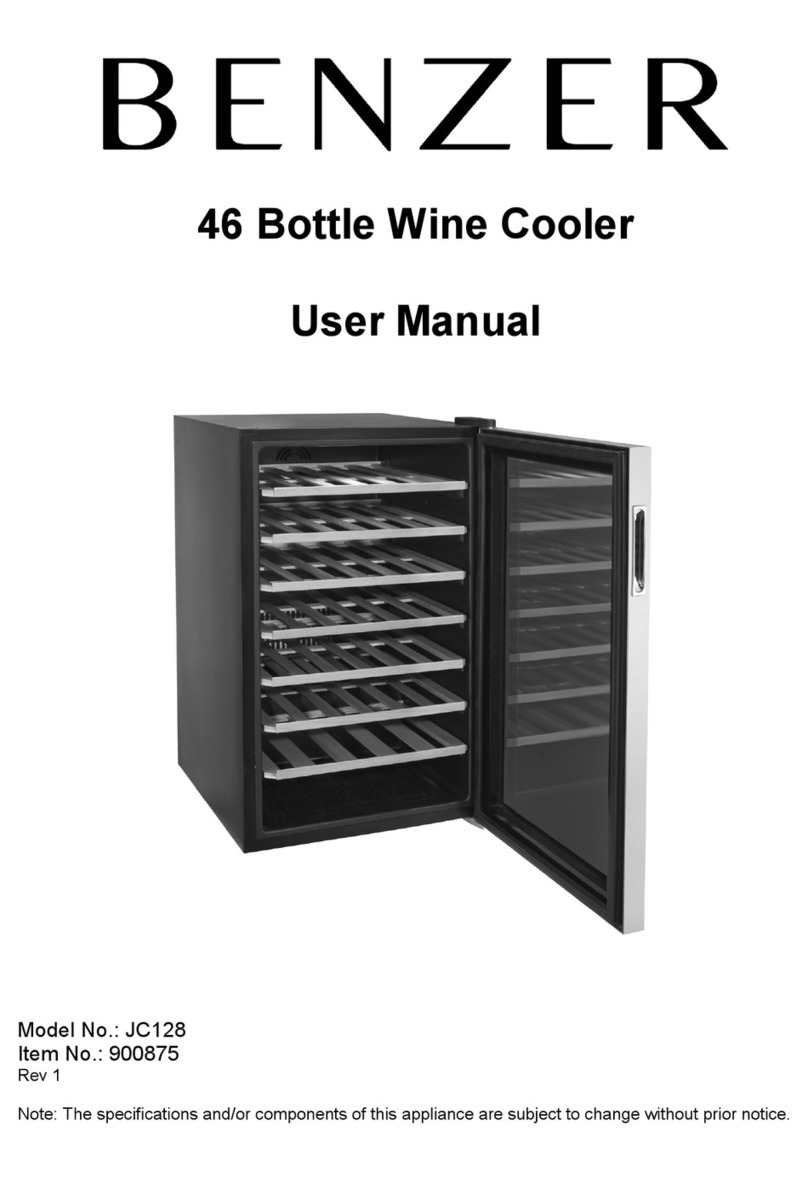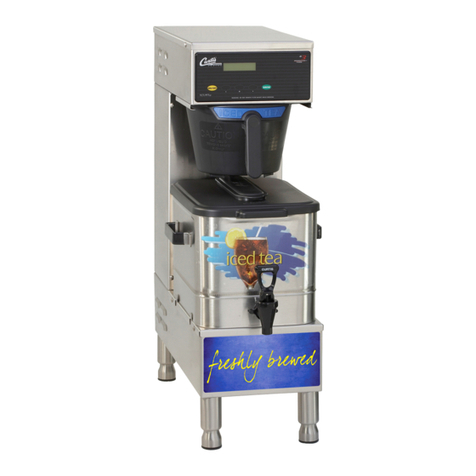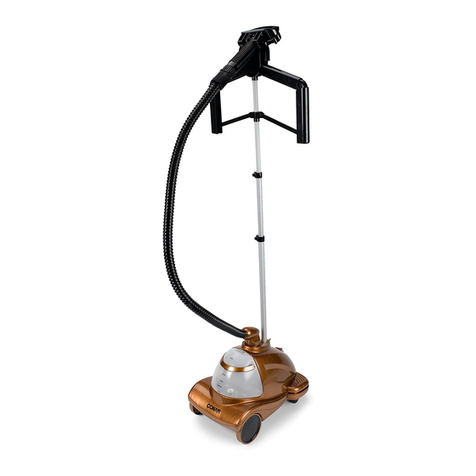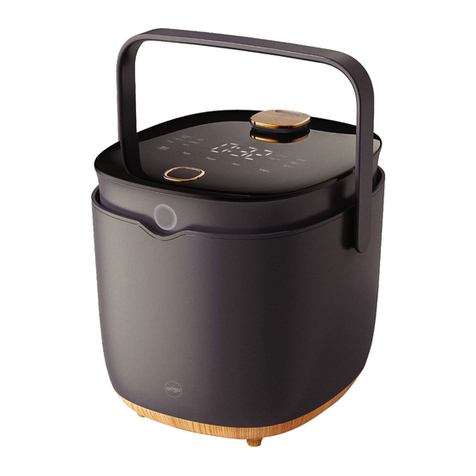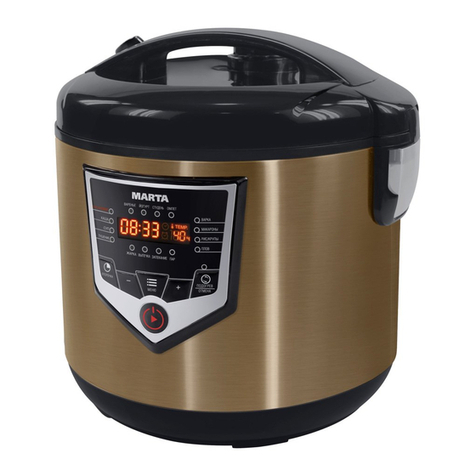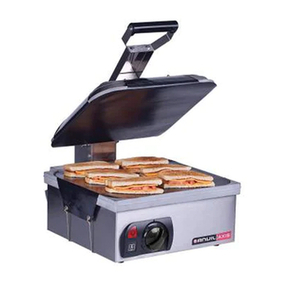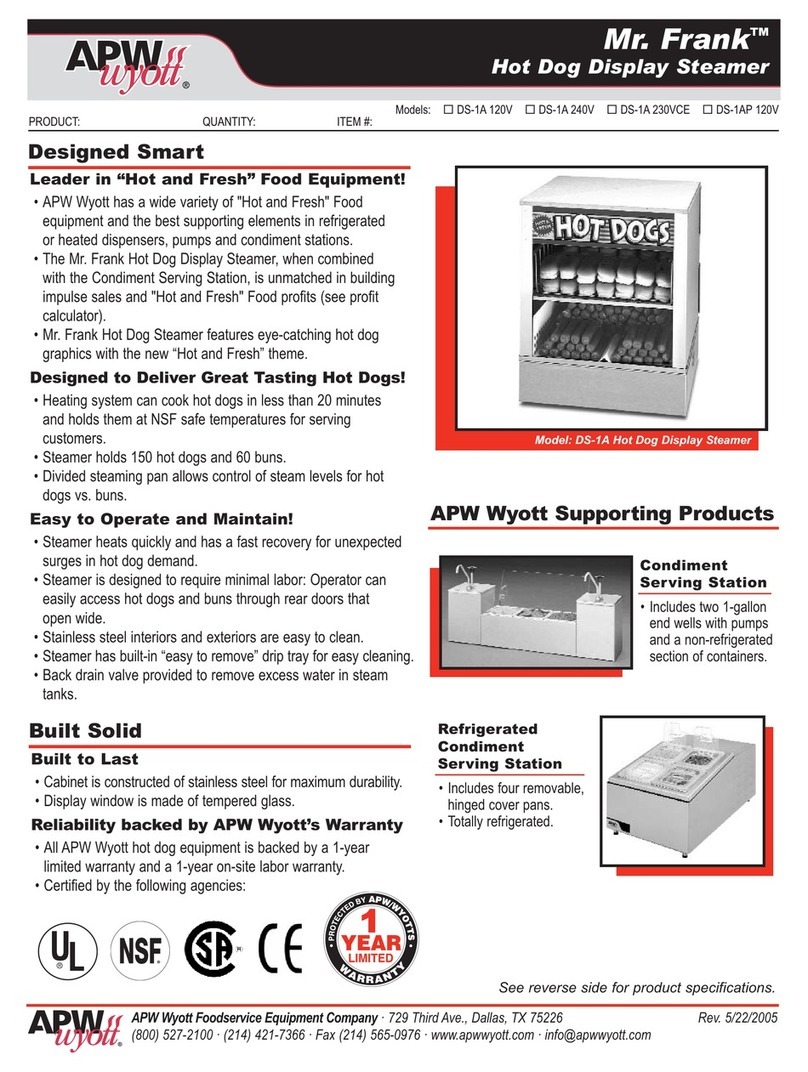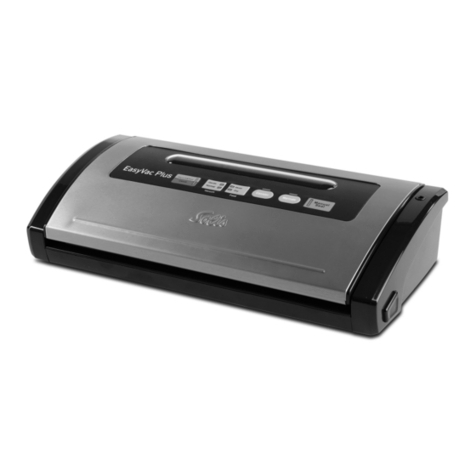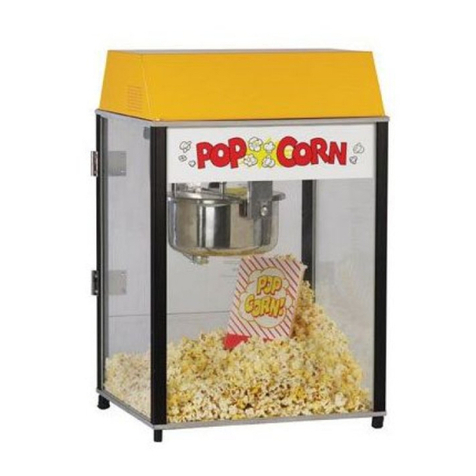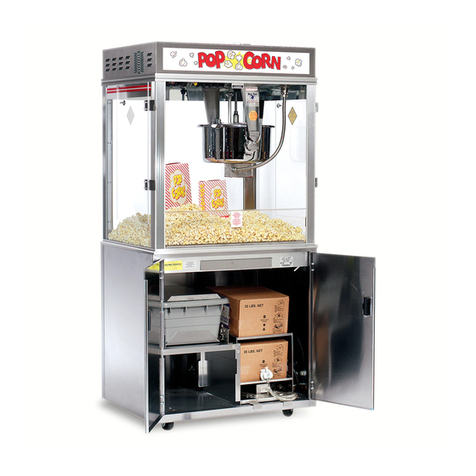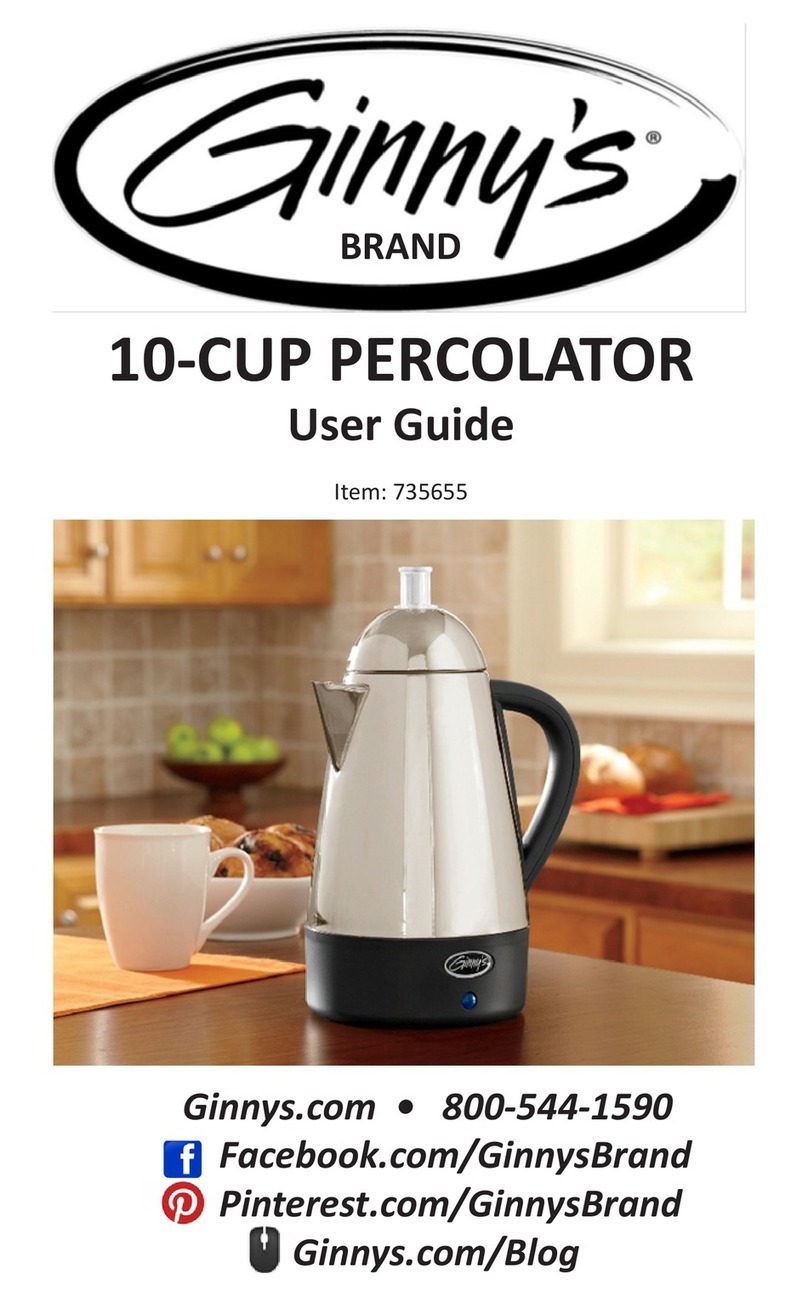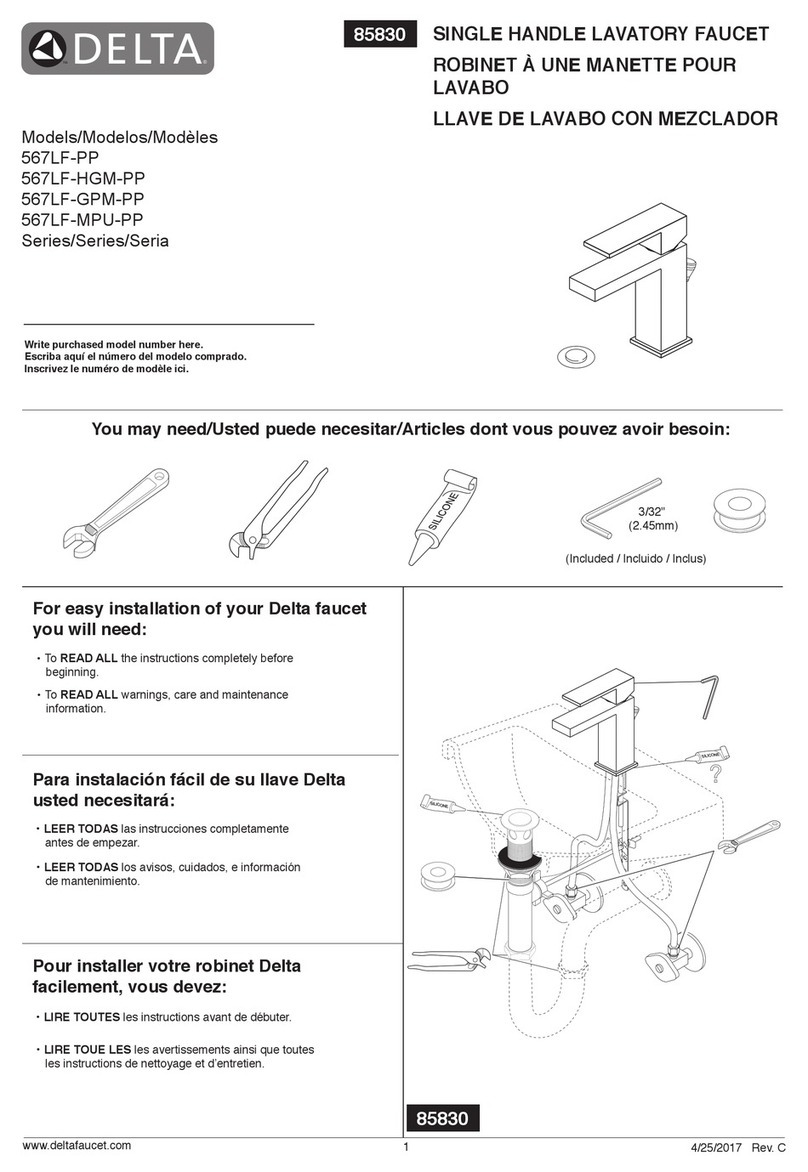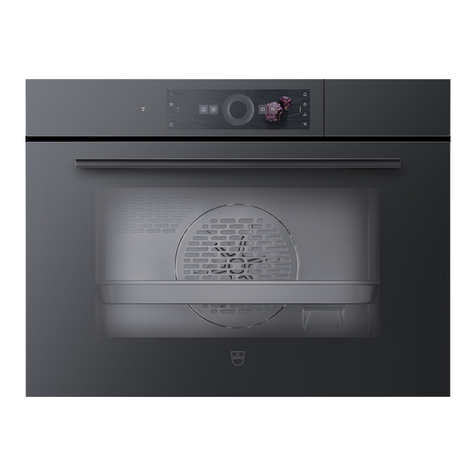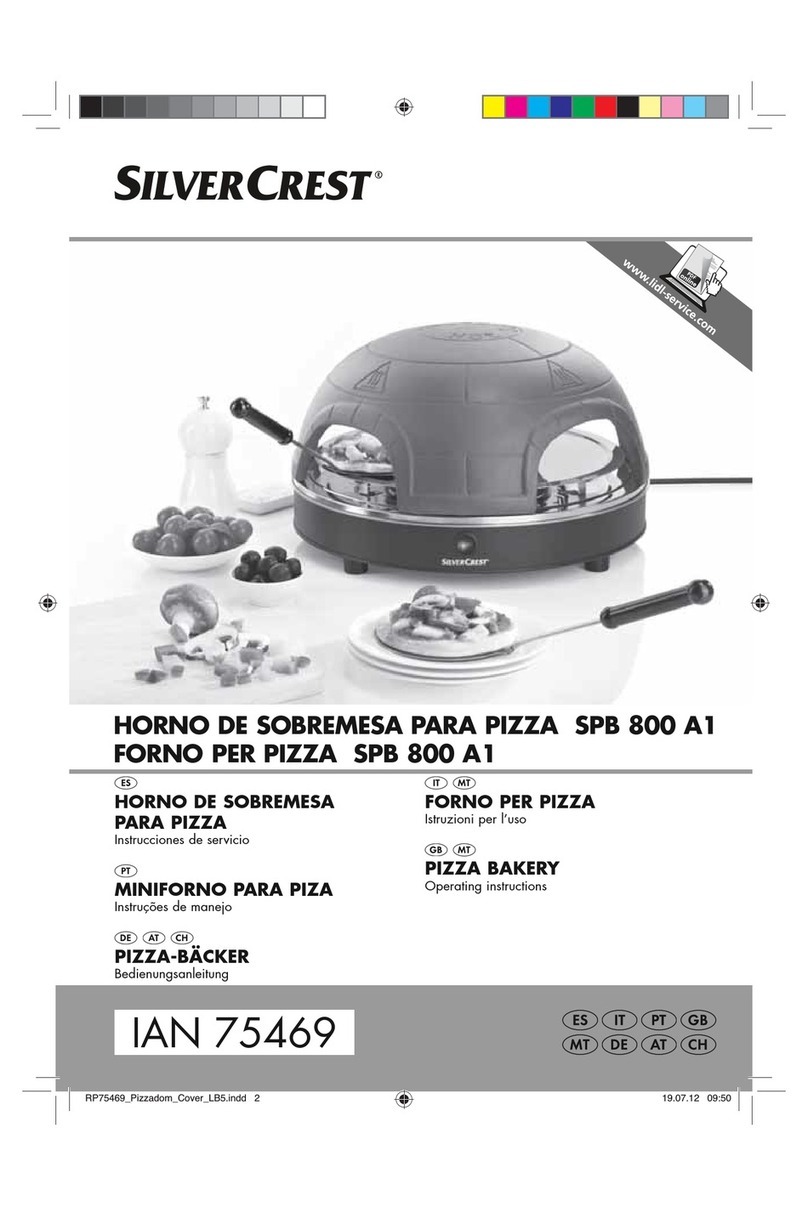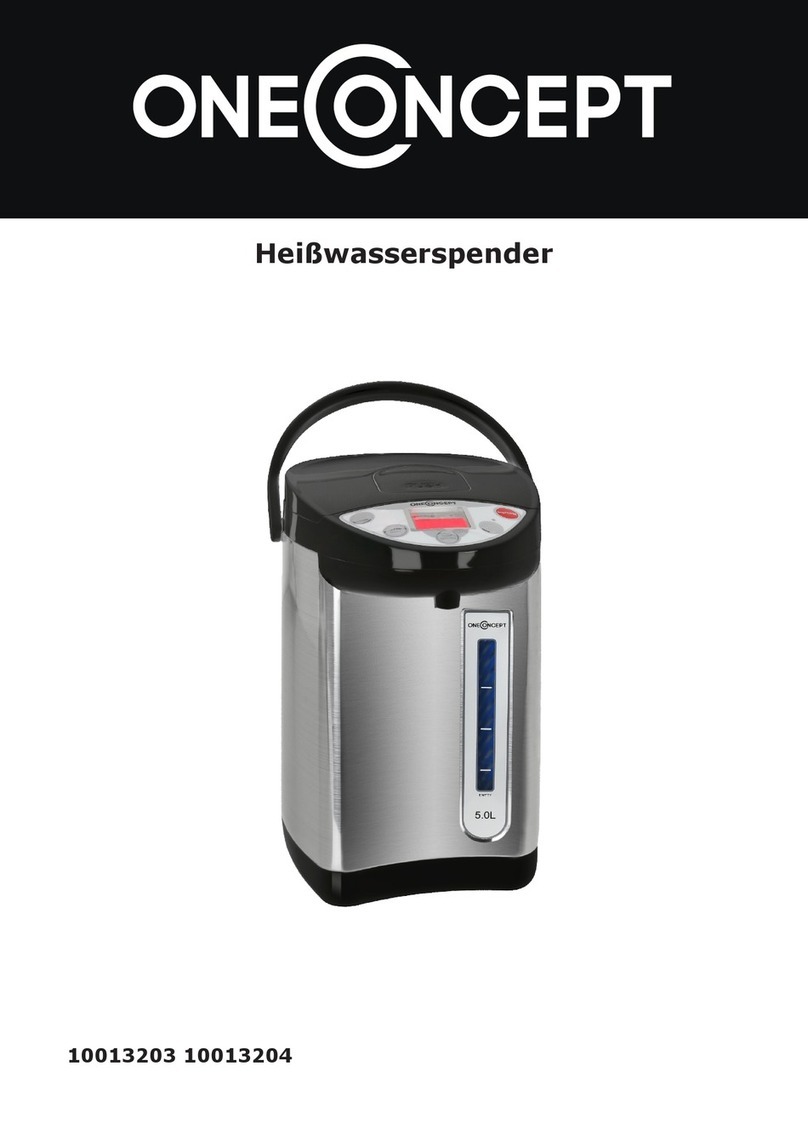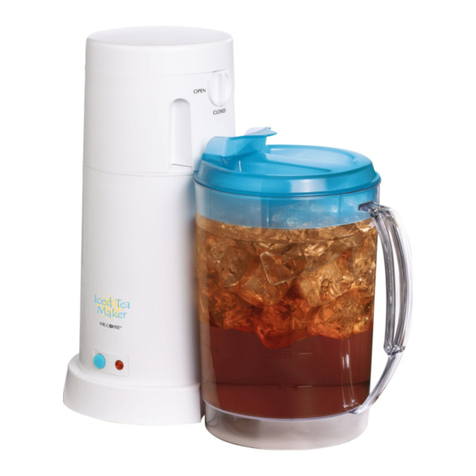Garland GPD Series User manual

Document #: G_GO_OM_PYRODECK_4606131 – 12/20
Users are cautioned that maintenance and repairs must be performed by a Garland authorized service agent
using genuine Garland replacement parts. Garland will have no obligation with respect to any product that has been
improperly installed, adjusted, operated or not maintained in accordance with national and local codes or installation
instructions provided with the product, or any product that has its serial number defaced, obliterated or removed,
or which has been modified or repaired using unauthorized parts or by unauthorized service agents.
For a list of authorized service agents, please refer to the Garland web site at http://www.garland-group.com.
The information contained herein, (including design and parts specifications), may be superseded and is subject
to change without notice.
FOR YOUR SAFETY:
DO NOT STORE OR USE GASOLINE
OR OTHER FLAMMABLE VAPORS OR
LIQUIDS IN THE VICINITY OF
THIS OR ANY OTHER
APPLIANCE
WARNING:
IMPROPER INSTALLATION, ADJUSTMENT,
ALTERATION, SERVICE OR MAINTENANCE
CAN CAUSE PROPERTY DAMAGE, INJURY,
OR DEATH. READ THE INSTALLATION,
OPERATING AND MAINTENANCE
INSTRUCTIONS THOROUGHLY
BEFORE INSTALLING OR
SERVICING THIS EQUIPMENT
PLEASE READ ALL SECTIONS OF THIS MANUAL
AND RETAIN FOR FUTURE REFERENCE.
THIS PRODUCT HAS BEEN CERTIFIED AS
COMMERCIAL COOKING EQUIPMENT AND
MUST BE INSTALLED BY PROFESSIONAL
PERSONNEL AS SPECIFIED.
IN THE COMMONWEALTH OF MASSACHUSETTS
THIS PRODUCT MUST BE INSTALLED BY A
LICENSED PLUMBER OR GAS FITTER. APPROVAL
NUMBER: G-1-07-05-28
For Your Safety:
Post in a prominent location, instructions to be
followed in the event the user smells gas. This
information shall be obtained by consulting
your local gas supplier.
INSTALLATION AND
OPERATION MANUAL
GARLAND GPD
SERIES GAS PIZZA OVENS
Original Document
Bring Your Passion to the Surface
ANSI Z83.11-2016
CSA.8-2016
MH62113
FOOD SERVICE EQUIP.

Document #: G_GO_OM_PYRODECK_4606131 – 12/20Page 2
IMPORTANT INFORMATION
WARNING:
This product contains chemicals known to the State of California to cause cancer and/or birth de-
fects or other reproductive harm. Installation and servicing of this product could expose you to air-
borne particles of glass wool/ceramic fibers. Inhalation of airborne particles of glass wool/ceramic
fibers is known to the State of California to cause cancer. Operation of this product could expose
you to carbon monoxide if not adjusted properly. Inhalation of carbon monoxide is known to the
State of California to cause birth defects or other reproductive harm.
Keep appliance area free and clear of combustibles.

Document #: G_GO_OM_PYRODECK_4606131 – 12/20 Page 3
TABLE OF CONTENTS
IMPORTANT INFORMATION........................2
DIMENSIONS AND SPECIFICATIONS GPD SERIES . . . 4
INSTALLATION....................................5
Rating Plate...........................................5
Gas Connections .....................................5
Installation Clearances ...............................6
Preparation ...........................................6
Ventilation ............................................6
Air Supply ............................................6
Installing Under Ventilation Canopy ...................6
Installing with Direct Ventilation.......................6
ASSEMBLY INSTRUCTIONS ........................7
Leg Installation .......................................7
Hearth Installation ....................................7
Double Deck Assembly. ...............................8
Gas Connection.......................................8
ADJUSTMENTS ...................................5
Gas Pressure Adjustments .............................9
Flame & Air Mixture Adjustment .......................9
By-Pass Flame Adjustment ............................9
OPERATION .....................................10
Break-In .............................................10
Calibration...........................................10
Flame Diverters ......................................10
Lighting/Shutdown Instructions ......................10
CLEANING .......................................11
Oven Exterior .......................................11
Oven Interior ........................................11
Core Plates...........................................11
TROUBLESHOOTING GUIDE .....................12

Document #: G_GO_OM_PYRODECK_4606131 – 12/20Page 4
DIMENSIONS AND SPECIFICATIONS GPD SERIES
Ratings shown are for natural gas
installations up to 2000 feet (610m)
above sea level. BTU input ratings
must be de-rated for high altitude
installations. Specify altitude of
product if over 2000 feet (610m).
This product is not approved for
residential use.

Document #: G_GO_OM_PYRODECK_4606131 – 12/20 Page 5
INSTALLATION
1. Damage Check: check carton or crate for possible
damage incurred in shipping. After carefully uncrating,
check for“concealed”damage. Report any damage
immediately to your carrier.
2. The correct type of gas for which the unit was
manufactured is noted on the rating plate, and this type
of gas must be used.
3. The gas pressure must be checked when the unit is
installed, to ensure that the unit gas pressure is the same
as specied on the rating plate. If necessary pressure
adjustments can be made at the pressure regulator,
supplied on each unit.
4. Have a qualied gas technician check the gas pressure
to make certain that existing gas facilities (meter, piping,
etc.) will deliver the BTU’s of gas required at the unit with
no more than ½”water column pressure drop. When
checking pressure, be certain that all the equipment on
same gas line is turned to the“ON”position.
5. Make certain that the new piping, joints and connections
have been made in a clean manner and have been
purged, so that the piping compound, chips, etc will not
clog pilots, valves and / or controls. Use pipe joint sealant
that is certied for use with LP gas.
6. WARNING; check gas connections for leaks, using soap
solution or similar means. DO NOT CHECK WITH AN OPEN
FLAME.
Rating Plate
All burner-input ratings are shown on the serial plate located
on the right side panel of the appliance.
When corresponding with the factory or your local
authorized factory service center regarding service problems
or replacement parts, be sure to refer to the particular unit
by the correct model number (including the prex and sux
letters and numbers) and the warranty serial number. The
rating plate axed to the unit contains this information.
We suggest installation, maintenance and repairs should be
performed by your local authorized service agency listed in
your information manual pamphlet.
In the event you have any questions concerning the
installation, use, care or service of the product, write or call
our Product Service Department.
This product must be installed by professional personnel as
specied. Garland products are not approved or authorized
for home or residential use, but are intended for commercial
applications only. Garland will not provide service,
warranty, maintenance or support of any kind other than in
commercial applications.
Gas Connections
The inlet manifold size for connection to the main gas supply
is (1) 3/4”NPT inlet for each deck.
The importance of proper installation of Commercial
Gas Cooking Equipment cannot be over-stressed. Proper
performance of the equipment is dependent, in great part,
on the compliance of the installation with the manufacturer’s
specications. Installation must conform to local codes
and with the National Fuel Gas Code NFPA 54/ANSI Z223.1,
Natural Gas Installation Code CAN/CGA-B149.1, or the
Propane Installation Code CAN/CGA-B149.2, as applicable,
including:
1. The appliance and its individual shut-o valve must be
disconnected from the gas supply piping system during
any pressure testing of that system at test pressures in
excess of 1/2 psi (3.45 kPa).
2. The appliance must be isolated from the gas supply
piping system by closing its individual manual shut-o
valve during any pressure testing of the gas supply piping
system at test pressures equal to or less than 1/2 psi (3.45
kPa)
Before assembly and making gas connections, check gas
supply.
A. The type of gas for which the unit is equipped is stamped
on the data plate located behind lower front panel.
Connect a unit stamped“NAT”only to natural gas;
connect those stamped“PRO” only to propane gas.
B. If it is a new installation, have gas authorities check meter
size and piping to assure that the unit is supplied with a
sucient amount of gas pressure to operate the unit.
C. If it is additional or replacement equipment, have gas
authorities check pressure to make certain that existing
meter and piping will supply fuel at the unit with not
more than ½”water column pressure drop.
NOTE: When checking pressure be sure that all other
equipment on the same gas line is on. A pressure regulator is
supplied with GARLAND Pizza Ovens. The regulator is preset
to deliver gas at the pressure shown on the rating plate.

Document #: G_GO_OM_PYRODECK_4606131 – 12/20Page 6
Installation Clearances
Minimum clearance for combustible and Non-Combustible
Construction : 1”(25mm) sides and 6”(152mm) rear. Suitable
for installation on combustible oors. Legs must be installed.
Preparation
1. Carefully remove unit from carton or crate. Burner tie
wires and other packing material should be removed
from units. On stainless steel units, the protective
material covering the stainless steel should be removed
immediately after the unit is installed.
2. This unit must be mounted on the factory-supplied legs
when installed. Refer to section titled LEG INSTALLATION
for details.
3. Provide adequate clearances for proper operation and
servicing of the appliance.
4. For your safety: keep the appliance area free and clear
from combustibles.
5. These units must be installed under an adequate
ventilation system. Refer to sections titled“Ventilation”
and“Air Supply”for further instructions.
Ventilation
This appliance must be installed in a location in which the
facilities for ventilation permit satisfactory combustion of gas
and proper venting. Proper ventilation is imperative for good
operation of the appliance. The ideal method of ventilating
equipment is the use of a properly designed ventilating
canopy, which should extend at least 6”/152mm beyond all
sides of the appliance (except against the wall if the canopy
is a wall installation). This is usually part of a mechanical
exhaust system.
Air Supply
1. It is necessary that sucient room air ingress be allowed
to compensate for the amount of air removed by any
ventilating system. Otherwise a subnormal atmospheric
pressure will occur, aecting the appliance operation
adversely and causing undesirable working conditions.
2. Appliances shall be located so as not to interfere with
proper circulation of air within the conned space. All gas
burners and pilots require sucient air to operate.
INSTALLATION Continued
3. Large objects should not be placed in front of the
appliance, which might obstruct the airow through
the front. Do not obstruct the ow of combustion and
ventilation air.
4. Do not permit fans to blow directly at the appliance, and
wherever possible, avoid open windows adjacent to the
appliance sides and back; also wall type fans which create
air cross-currents within the room.
Installing Under Ventilation Canopy:
Too strong a pull through the exhaust system will pull heat
out of the oven too rapidly and cause uneven baking (strong
bottoms and light tops).
All ovens, operating under a ventilating canopy should be
equipped with a canopy ue diverter assembly (supplied to
oset too strong a pull.
Installing with Direct Ventilation
Wherever a direct ue is unavoidable, it is necessary that:
1. The draft diverter shipped with the oven is installed.
2. An adequately sized draft regulator (barometric damper)
must be installed in the ue line as close to the oven
connection as possible.
Do not Undersize Vent Pipe. This can cause resistance to
ow and impede good venting. If a horizontal run must be
used it should rise no less than 1/4”for each linear foot or
run. The ue should rise two feet to three feet above the roof
line or two feet to three feet above any portion of a building
within a horizontal distance of ten feet. The ue should be
equipped with a well designed vent cap.
Never, under any circumstances, install a damper or place
steel wool in an oven ue.

Document #: G_GO_OM_PYRODECK_4606131 – 12/20 Page 7
INSTALLATION Continued
4. If the oven is supplied with hearth core plates, slide the
plates into the oven.
GPD-48 is supplied with (2) two hearth core plates.
GPD-60 is supplied with (3) three hearth core plates.
5. Installation instruction for Hearth.
a. Place a screwdriver, or a similar prying device,
between the core plate and hearth frame
support,(being careful not to chip the core plate)
then place two spacer clips (PN G03086-1-9)
between the core plate and the hearth frame
support. (See instructions sheet –PN 1917401) 6”
from front & 6”from rear.
b. Place a screwdriver between the back of the right
core plate and hearth frame support. Pry the core
plate forward, away from the hearth support and
place a clip within the space centered on each core
plate.
c. Repeat step b for the left core plate
d. Repeat step b for the center core plate for 60”unit.
ASSEMBLY INSTRUCTIONS
Leg Installation
On single deck units, tip oven section units back. On double-
deck units, tip lower oven section ONLY on its back. Each leg
is secured with four 3/8”(16mm) hex head bolts, threaded
into nuts located on the underside of the base angle. When
both front legs are installed, lift and block up rear of unit.
Install rear legs.
Hearth Installation
NOTE: Because of the weight of the hearth plates, be very
careful to avoid injury to yourself and to shelf joint edges,
when sliding shelf halves into the oven.
To install hearth core plates or steel hearth assembly,
proceed as follows:
1. Slide the wooden frame out of the oven.
2. Before installing the hearth core plates or steel hearth
assembly, be sure that the bottom heat deectors are
properly positioned with the treaded side (bumps) in the
up position.
3. If the oven is supplied with a steel hearth assembly, place
the hearth spacers (with the at side in the up position)
on the extreme left and right sides of the oven resting on
the heat deectors. Making sure the hearth spacers are
not disturbed, slide the steel hearth assembly into the
oven.

Document #: G_GO_OM_PYRODECK_4606131 – 12/20Page 8
5. Place the ue connector on the lower unit with extended
part to the right of the unit. (Fig 1)
6. Raise the top oven section up and onto the lower oven
section.
7. Carefully remove piece of lumber ensuring lower section
ue connector inserts into upper section vent hole.
8. Assemble the interconnecting gas piping as shown and
connect to rear gas inlets.
Gas Connection
1. The appliance must be isolated from the gas supply
piping system by closing its manual shut-o valve during
any pressure testing of the gas supply piping system at a
test pressure equal to or less that 1/2 psig. (3.45 kpa.).
2. The appliance and its shut o valve must be
disconnected from the gas supply piping system during
any pressure testing of that system at test pressures in
excess of 1/2 psig. (3.45 kpa.).
NOTE: The ovens should not be installed on the same line
with space heaters, broilers or other equipment with high
intermittent demand.
3. When making gas connections, use a pipe joint
compound that is resistant to the action of liquied
petroleum gases.
4. Each oven is supplied with two possible gas connection
locations. One is located on the right side and the other is
located on the right rear corner.
5. The right side connection is plugged with a 3/4 counter
sunken plug. If this connection is used, you must cap the
rear connection.
6. The gas pressure regulator is part of the combination
valve and is adjusted to yield a pressure of 6.0”water
column for natural gas and 10”water column for propane
gas.
7. A separate shut-o valve for each oven must be provided.
It should be as close as possible to the place where the
gas line goes into the oven. It must be located so that it is
easily accessible. A handle or wrench should be chained
to the valve where it will always be at hand.
8. For a stack of two ovens, two shut-o valves, one for each
oven must be provided.
ASSEMBLY INSTRUCTIONS Continued
Double Deck Assembly
1 Secure legs to lower section
2. Remove stainless steel top trim strip from lower unit if not
already removed.
3. Tip upper unit backward. Remove vent patch at lower
rear if not if not already removed.
4. Place 1”x 4”x 65”(25mm x 100mm x 1650mm) long piece
of lumber across the rear top of oven to prevent stacks
from misarranging.

Document #: G_GO_OM_PYRODECK_4606131 – 12/20 Page 9
Gas Pressure Adjustments
All GPD Series ovens are equipped with xed orices and
cannot be adjusted for gas ow: If necessary, pressure
adjustments can be made at the pressure regulator (located
on the combination gas valve).
A pressure tap is supplied with the unit and it is installed
on the manifold, downstream of the main valve. The gas
pressure must be checked when the unit is installed, to
ensure that the unit gas pressure is the same as specied on
the rating plate.
Flame & Air Mixture Adjustment
After the pilot burner is ignited, when heat is desired, turn
gas cock dial to“ON”position and set the thermostat dial
to the desired temperature. The oven burner ame should
always have a blue appearance. This indicates a good mixture
of air and gas. When using LP gas the ame will have a blue
yellow appearance. Follow steps 1 thru 4 to adjust the ame
for good quality.
1. Loosen the small knurled locking disk.
2. Turn the large adjusting disk towards the air mixture
throat to reduce the opening. This restricts the amount of
air, causing the ame to turn yellow.
3. Turn the adjusting disk gradually out, away from the air
mixer throat, allowing more air into the air mixer until the
yellow disappears and a sharp blue ame appears.
4. When the ame turns blue and spreads out, turn the
locking disk tight against the adjusting disk. There may
be intermittent yellow-orange ame noticed. This is
caused by dust particles burning in the Flame. Should the
burners fail to light, check to see if there is a problem with
any or all of the following.
ADJUSTMENTS
A. The gas supply: If there are other gas appliances on the
same supply line, shut them o temporarily and see if
the ame comes back on, or if it uctuates as other gas
appliances are turned on and o. If so, it would indicate
overloading of the gas supply or a faulty gas pressure
regulator. You should contact a qualied service agency
or the local gas company to check the gas supply.
B. Dirty burner orice or ports: With the oven cold, use a
thin wire to check that the spud orice (nozzle) is clear. If
necessary, loosen and remove the spud. Be careful when
cleaning not to enlarge the hole. Then, using a wire or
thin nail, clear the burner ports of carbon deposits or
other restrictions.
Periodically, after breaking the ovens in, check the burner
ame and readjust the air mixture if needed. Black soot on
the oven doors or in the burner compartment may indicate
that not enough air is mixing with the gas. If this is the case,
back o the air adjustment disk until the proper ame and
color is set.
By-Pass Flame Adjustment
The by-pass in the thermostat is a small gas supply through
the control that is independent of the dial setting. It is
controlled strictly by the Adjusting Screw. This small gas
supply maintains a minimum ame or the burner(s), helping
to maintain the heat in the oven and assisting in recovery.
This adjustment is best done when the oven is being heated
for the day’s business. To adjust the by-pass ame follow
steps 1 thru 4.
1. Turn the oven on and set the thermostat to the desired
temperature.
2. Allow the oven to pre-heat until the burner ame begins
to throttle down.
3. At this point, turn the thermostat dial all the way down.
This ensures that the thermostat is in the by-pass mode.
There should now be a small steady ame remaining
across the burner without ickering or going out.
NOTE: It may be necessary to turn the thermostat back up to
relight the burner(s) if there is not ame present.
4. Using a small screwdriver, reach through the access hold
on the control panel to the left of the thermostat knob.
Turn the by-pass adjustment screw to raise or lower the
by-pass ame as required. Counter-clockwise raises the
ame, clockwise lowers the ame. Take care not to turn
the screw out too far as that will allow gas to leak around
the adjustment screw.
IMPORTANT:
All gas burners and pilots need sufficient
air to operate and large objects should not
be placed in front of this oven, which would
obstruct the airflow through the front.
Objects should not be placed on main rear of
oven while in use.

Document #: G_GO_OM_PYRODECK_4606131 – 12/20Page 10
ADJUSTMENTS Continued
Calibration
1. Field calibration is seldom necessary and should not
be attempted unless experience with cooking results
denitely proves that the control is not maintaining the
temperature to which the dial is set.
2. Place the thermocouple of the test instrument or
reliable mercury thermometer in the center of the oven
approximately one or two inches (25mm – 50mm) above
the hearth. Do not place the thermocouple directly in
contact with the hearth.
3. Set the thermostat temperature dial to 500 degrees
F (260 degrees C) and allow the oven temperature to
stabilize. The thermostat must be allowed to cycle twice
before taking a test reading.
4. Check the temperature when the burner just cycles
o after the second cycle, compare the reading of
thermocouple or thermometer with thermostat setting.
5. If the two do not agree (plus or minus 15 degrees F (8
degrees C)), carefully remove the thermostat dial, not
disturbing dial settings.
6. Hold calibration plate and loosen the two calibration
screws until the plate can be moved independently of the
control.
7. Turn calibration plate so that the instrument of
thermometer reading is in line with the indicator mark.
Hold plate and tighten screws rmly.
8. Replace dial.
9. NOTE: If the above adjustment is prevented by the two
loosened calibration lock screws being in contact with
the ends of the screw clearance plate to the proper
location, reassemble screws in the other tapped holes
designed for them.
NOTE: NO ATTEMPT TO RECALIBRATE THE OVEN CONTROL
SHOULD BE MADE WITHIN THE WARRANTY PERIOD IF THE
TEMPERATURE IS WITHIN ±20 DEGREES FAHRENHEIT OF THE
DIAL SETTING. RECALIBRATION SHOULD BE MADE IF THE
CONTROL IS OUT MORE THAN ±20 DEGREES FAHRENHEIT
AND LESS THAN ±50 DEGREES FAHRENHEIT. IF THE CONTROL
IS OUT MORE THAN 50 DEGREES FAHRENHEIT FROM THE
DIAL SETTING, THE CONTROL WILL BE REPLACED UNDER
WARRANTY, (WITHIN THE WARRANTY PERIOD).
Flame Diverters
Flame diverters distribute the heat evenly below the deck.
They must be in good condition and properly placed in
the burner chamber in order to be eective. Damaged or
improperly installed ame diverters adversely aect the
oven performance. Check them periodically and replace as
needed. Make sure that the“V”shaped diverters are pushed
all the way to the back of the oven as far as they will go.
OPERATION
Break-In
1. Once the equipment has been installed and tested by
qualied professional personnel, the oven is ready for
operation.
2. Many of the parts used in the oven have a thin protective
oil covering. This oil should be burned o before the
oven is used for the production of food products. It is
normal for the unit to smoke while burning o excess
oil. Washing the deck of the oven with a damp clean
cloth and mild soap solution will remove some of the
protective oil coating.

Document #: G_GO_OM_PYRODECK_4606131 – 12/20 Page 11
OPERATION Continued
3. Select a temperature of 300 degrees F (150 degrees C)
and turn the gas cock dial to the ON position.
4. Allow the oven to warm to 300 degrees F (150 degrees
C) and keep it there for FIVE HOURS, or at least until all
smoke and fumes have disappeared. The smoke and
fumes are from moisture in the deck and insulation and a
light coat of oil.
5. Turn the thermostat knob to 475 degrees F (250
degrees C). Allow the oven to warm up to your selected
temperature for 1 to 1 1/2 hours.
6. When the oven has reached the selected temperature,
experiment until you get the feel of the oven and the
speed of the bake. In case of some initial unevenness in
the baking, have patience for a few days until the oven
cures.
Lighting/Shutdown Instructions
1. Open control panel door located on right hand side of
unit. To access combination gas control.
2. Turn gas cock on combination control to the“OFF”
position. Wait 5 minutes.
3. Turn gas cock on combination control to the“PILOT”
position.
4. Depress gas cock and light pilot burner.
5. Hold gas cock depressed for one minute after pilot has
been ignited, then release. Pilot should continue to burn.
6. If pilot does not continue to burn after releasing gas cock,
repeat steps 2 thru 5 or have a qualied serviceman check
the system. Do not allow anyone else to attempt repairs.
7. Once pilot is lit, turn gas cock to the“ON”position. It is not
necessary to repeat lighting procedure unless the pilot is
extinguished by any cause.
8. To shut down unit, turn gas cock on combination control
to the“OFF”position
CLEANING
Oven Exterior
Painted Surfaces should be cleaned when cool, using a mild
soap and warm water solution on a sponge or soft clean
cloth. Rinse and dry thoroughly with a soft clean cloth.
Stainless Steel Surfaces usually respond to cleaning as noted
above. Stubborn stains or heat tint may require the use of
a commercial type cleaner, such as Penny Brite or stainless
steel pad. Always rub in the direction of the polished lines.
Rinse thoroughly with fresh water and wipe dry.
Oven Interior
Aluminized Steel Surfaces Should be cleaned with a damp
soft cloth and mild household detergent.
Core Plates
CAUTION: The use of water to cool down or clean core plates
will void warranty.
To clean core plates, set thermostat dial to 550 degrees F
(288 degrees C) at the end of the cooking day and allow
thermostat to cycle for one hour. When the oven has cooled,
cooking residue will be carbonized and can be removed
by sweeping with a sti brush. Stubborn residue can be
loosened with a scraper.

Document #: G_GO_OM_PYRODECK_4606131 – 12/20Page 12
TROUBLESHOOTING GUIDE
Problem Causes Solutions
Hot Spots in Deck Flame diverters not installed properly Push all the way to the back of oven
Flame diverters warped or damaged May need replacing
Bottoms cook before top Deposit on deck Clean deck
Low production oven idling Turn temperature up after loading pizza. Make sure to
turn the temperature down after bake is compete
By-pass flame too high Adjust by-pass flame
Improper damper position Adjust dampers
Bottoms become light during
periods of heavy production
Improper damper position Close dampers
Placement of pizza Change placement
By-pass flame low Increase by-pass flame
Color overall dark High temperature Lower temperature
Pizza left in too long Reduce bake time
By-pass flame high Reduce by-pass flame
Thermostat Check actual temperature; call for service
Color overall light Short bake time Bake longer
Lower temperature Increase temperature
Dough Check dough for freshness
Pre-heat time short Allow for adequate pre-heating
Top color light Damper closed Open damper
Oven idles during slow periods Increase temperature to bake, reduce again when
bake is finished
Burner flame yellow/soft/lazy Not enough air mixing Open (adjust) air shutter
Low gas pressure Adjust pressure
Flame lifts off burner ports Too much air mixed with gas Close (adjust) air shutter
Flashes back in burner Gas pressure too high Adjust pressure
Pops excessively when turned off Wrong orifice in unit Replace with proper orifice
Burner flame too large Unit over gassed or wrong orifice Check gas pressure and orifice size
Burner flame shuts off when
oven reaches set temperature
By-pass set too low Adjust by-pass

Document #: G_GO_OM_PYRODECK_4606131 – 12/20 Page 13
Notes

Document #: G_GO_OM_PYRODECK_4606131 – 12/20Page 14
Notes

Document #: G_GO_OM_PYRODECK_4606131 – 12/20 Page 15
THIS PAGE INTENTIONALLY LEFT BLANK

Welbilt oers fully-integrated kitchen systems and our products are backed by
KitchenCare® aftermarket parts and service. Welbilt’s portfolio of award-winning brands
includes Cleveland™, Convotherm®, Crem®, Deleld®, tkitchen®, Frymaster®,
Garland®, Kolpak®, Lincoln®, Manitowoc®, Merco®, Merrychef® and Multiplex®.
Bringing innovation to the table • welbilt.com
©2020 Welbilt Inc. except where explicitly stated otherwise. All rights reserved.
Document #: G_GO_OM_PYRODECK_4606131 – 12/20
GARLAND COMMERCIAL RANGES, LTD.
1177 KAMATO ROAD, MISSISSAUGA, ONTARIO, CANADA L4W 1X4
8884427526
WWW.GARLANDGROUP.COM

Welbilt propose des systèmes de cuisine entièrement intégrés et nos produits sont soutenus
par le service après-vente de pièces de rechange et services de KitchenCare®. Les marques
primées de Welbilt comprennent Cleveland™, Convotherm®, Crem®, Deleld®, tkitchen®,
Frymaster®, Garland®, Kolpak®, Lincoln®, Manitowoc®, Merco®, Merrychef® et Multiplex®.
L’innovation au service de la restauration • welbilt.com
©2020 Welbilt Inc. sauf indication contraire explicite. Tous droits réservés.
Numéro du document: G_GO_OM_PYRODECK_4606131 – 12/2020
GARLAND COMMERCIAL RANGES, LTD.
1177 KAMATO ROAD, MISSISSAUGA, ONTARIO, CANADA, L4W1X4
8884427526
WWW.GARLANDGROUP.COM

Numéro du document: G_GO_OM_PYRODECK_4606131 – 12/2020 Page 15
PAGE INTENTIONNELLEMENT LAISSÉE EN BLANC

Numéro du document: G_GO_OM_PYRODECK_4606131 – 12/2020Page 14
Remarques

Numéro du document: G_GO_OM_PYRODECK_4606131 – 12/2020 Page 13
Remarques
This manual suits for next models
4
Table of contents
Other Garland Kitchen Appliance manuals
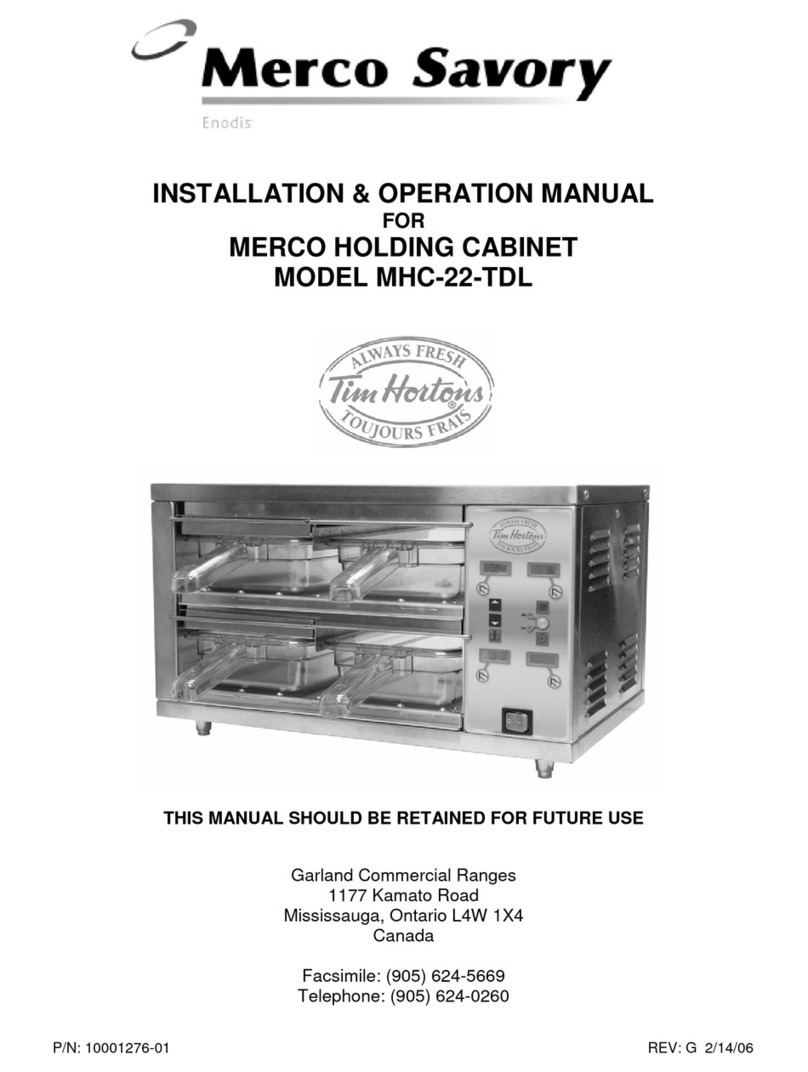
Garland
Garland MERCO Savory MHC-22-TDL User manual
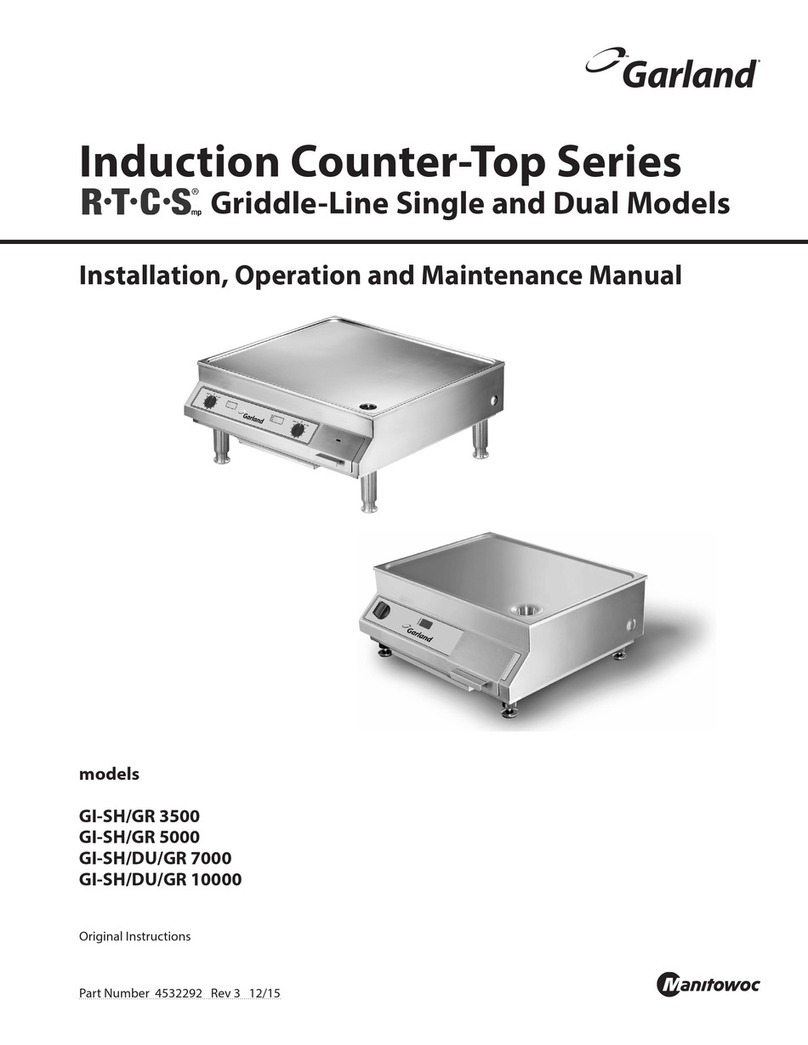
Garland
Garland GI-SH/GR 3500 User manual
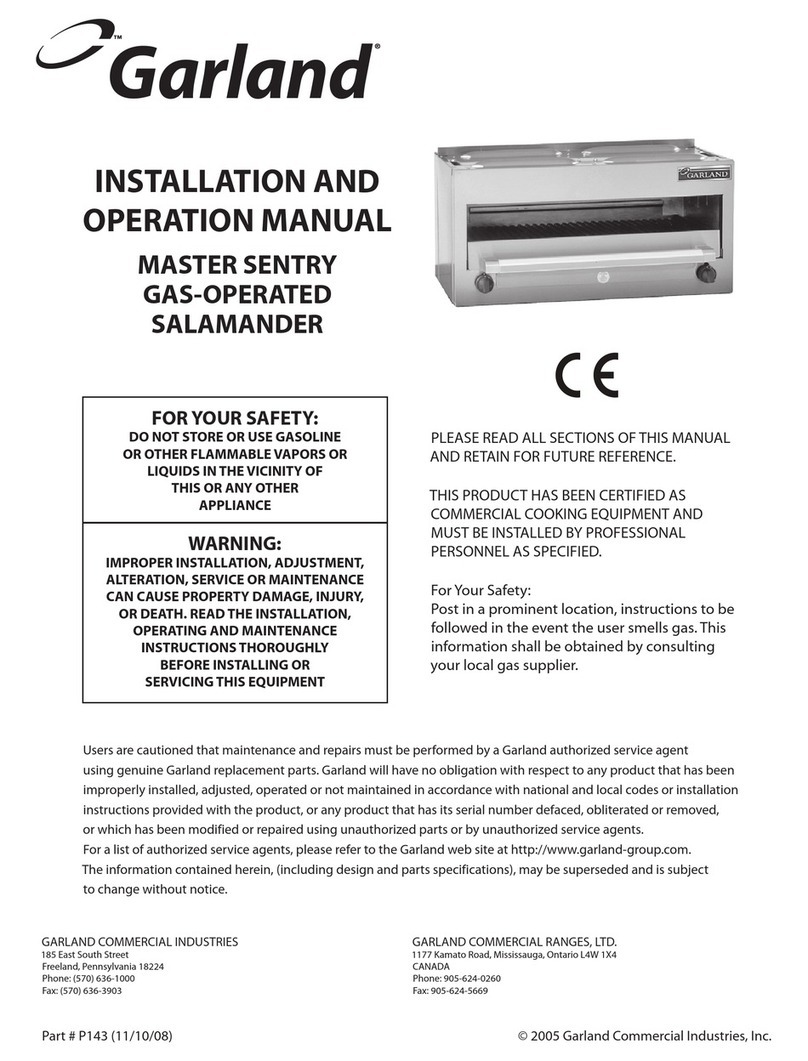
Garland
Garland MSTSR16-280 User manual

Garland
Garland GTOG12-2 User manual
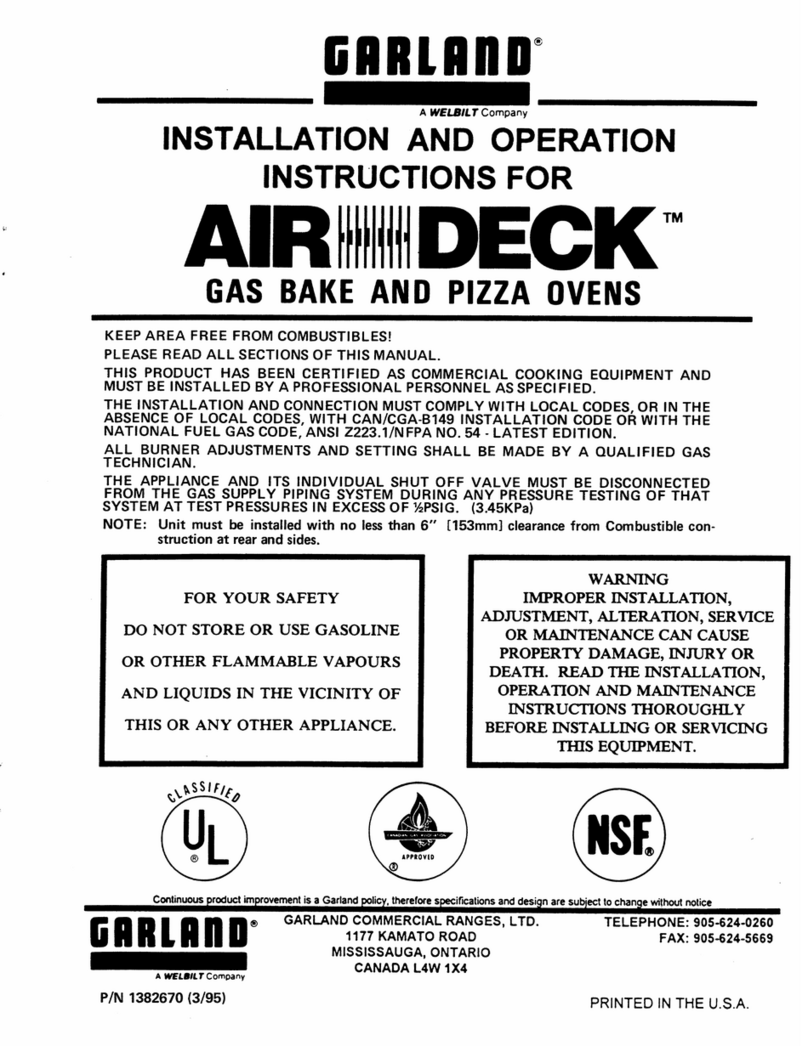
Garland
Garland Air-Deck G56T User manual
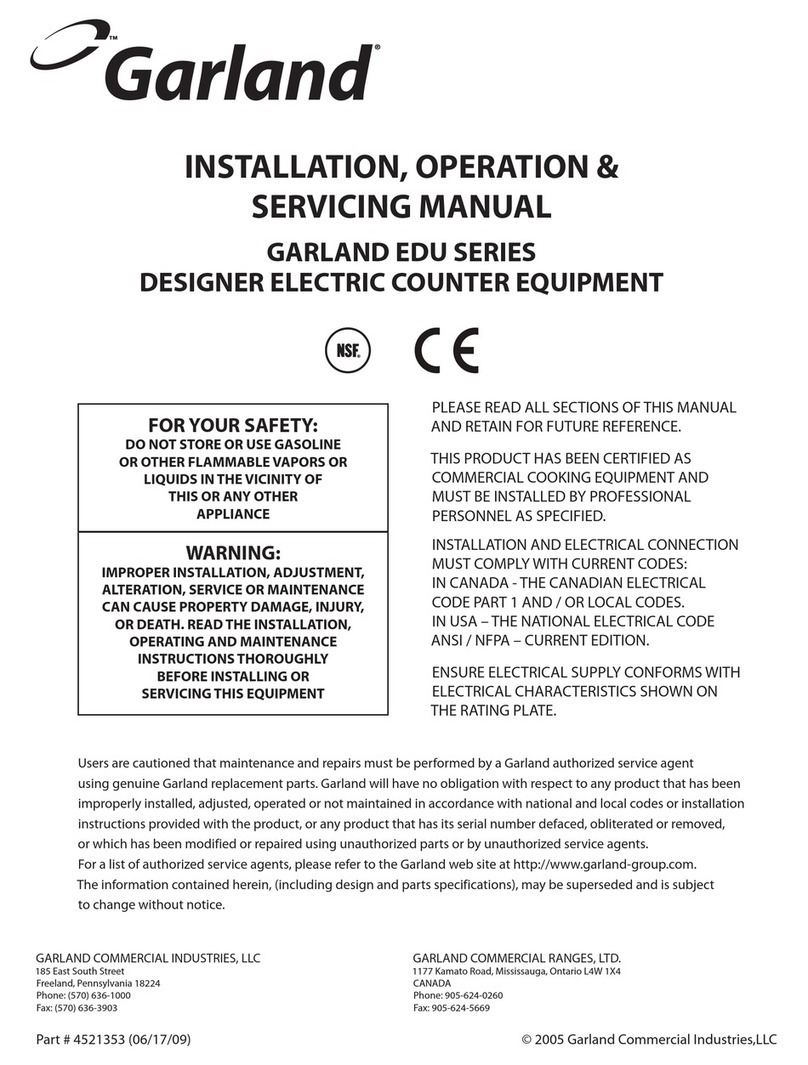
Garland
Garland EDU-15HSE User manual
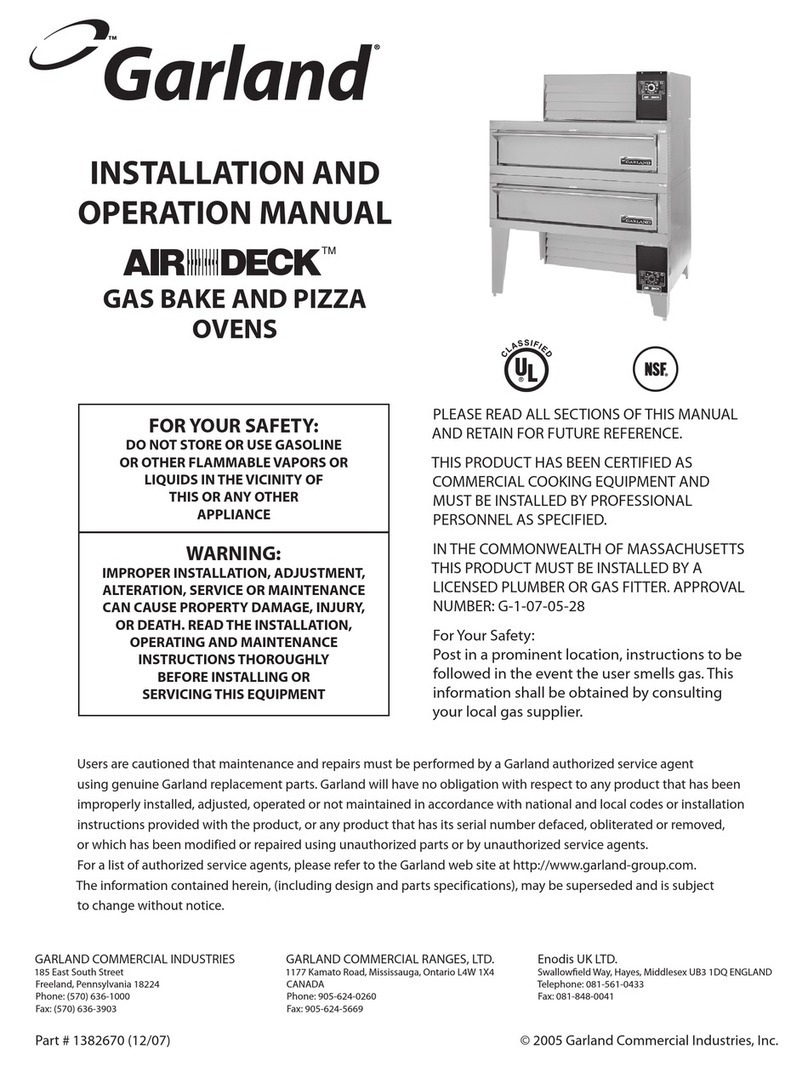
Garland
Garland Air-Deck G56PT Setup guide
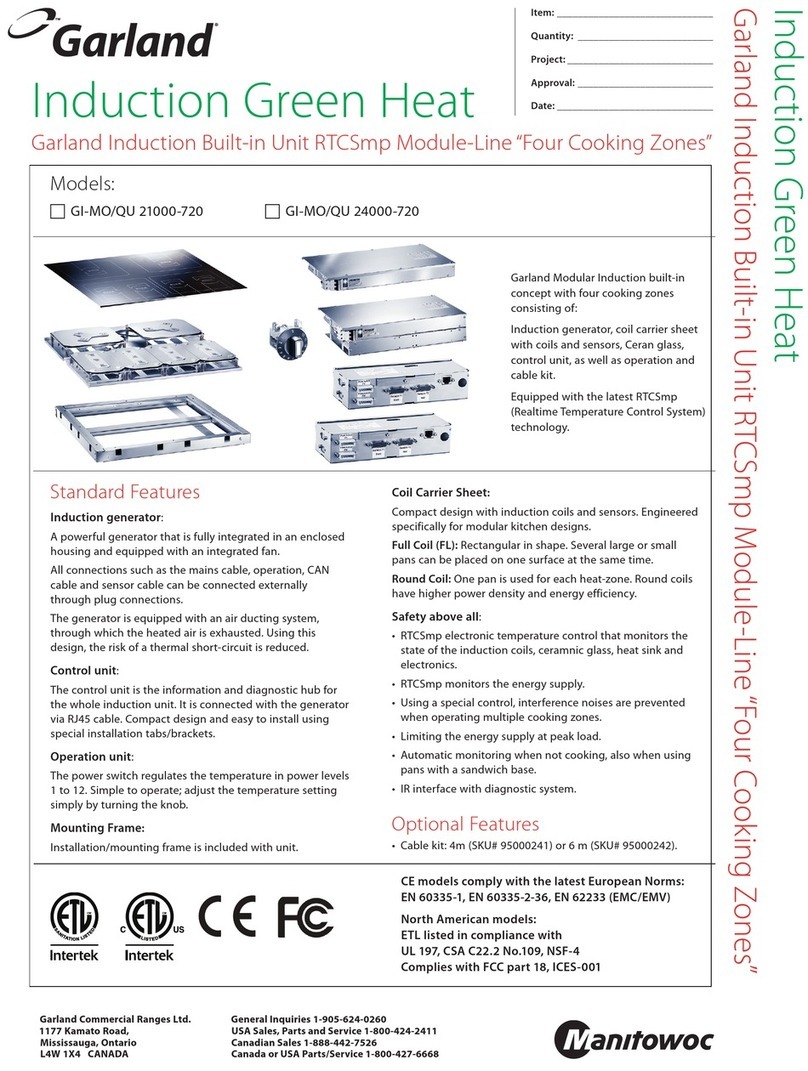
Garland
Garland GI-MO/QU 21000-720 Manual

Garland
Garland HO IN 1800 User manual
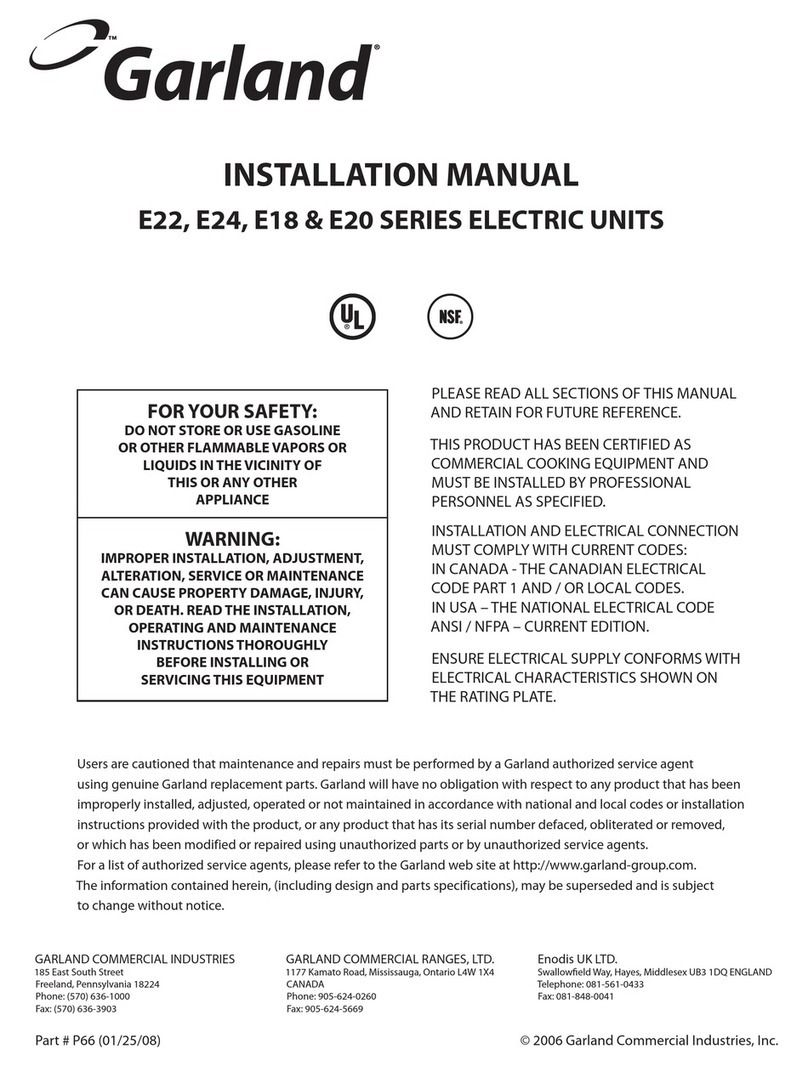
Garland
Garland E22 series User manual
